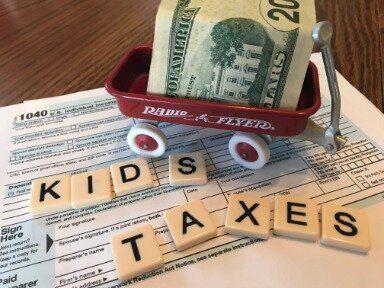Contents:


Often referred to as additional paid-up capital, this is the extra amount investors pay for shares over the par value of the business. This additional capital is created when a company issues new shares, and it can be reduced when the company buys back its own shares. In an initial public offering, a set amount of stock is sold for a set price. After that, the stock can be traded freely, but the money that is paid directly to the company for that initial offering is the share capital. The stockholders’ equity is only applicable to corporations who sell shares on the stock market. For sole traders and partnerships, the corresponding concepts are the owner’s equity and partners’ equity.
PolyPid Announces Receipt of Nasdaq Notification of Minimum Stockholders’ Equity Non-Compliance – Yahoo Finance
PolyPid Announces Receipt of Nasdaq Notification of Minimum Stockholders’ Equity Non-Compliance.
Posted: Fri, 14 Apr 2023 20:01:00 GMT [source]
The exact calculation and total depends on what is included as an asset and liability, but it always represents the amount of money available to the business, either to pay off liabilities or reinvest in its operations. While this figure does include money that could be returned to the owners of the company, it also includes items like depreciation and amortization, which cannot be directly distributed to shareholders. If a business has more liabilities than assets or does not have enough stockholders’ equity to cover its debt, then it will need to turn to outside sources of capital. If a company does not have enough cash flow or assets to cover their liabilities, they are in what is known as “negative equity.”
Statement of Stockholders’ Equity Example
PwC refers to the US member firm or one of its subsidiaries or affiliates, and may sometimes refer to the PwC network. This content is for general information purposes only, and should not be used as a substitute for consultation with professional advisors. The impact of various types of equity on earnings per share is addressed in FSP 7. Stockholders’ equity presentation and disclosure considerations related to limited liability companies and partnerships are detailed in FSP 32. Stash101 is not an investment adviser and is distinct from Stash RIA. Nothing here is considered investment advice. Stockholders’ equity, also known as shareholder’s equity, is the residual interest in the assets of a corporation after deducting its liabilities.
Bonds are contractual liabilities where annual payments are guaranteed unless the issuer defaults, while dividend payments from owning shares are discretionary and not fixed. To calculate retained earnings, the beginning retained earnings balance is added to the net income or loss and then dividend payouts are subtracted. A summary report called a statement of retained earnings is also maintained, outlining the changes in retained earnings for a specific period. Companies fund their capital purchases with equity and borrowed capital. The equity capital/stockholders’ equity can also be viewed as a company’s net assets . Investors contribute their share of (paid-in) capital as stockholders, which is the basic source of total stockholders’ equity.
It also helps to find out if the company has gone over its assets without accumulating enough earnings. The board members can then keep track of how much money is due to be paid to shareholders as dividends. For example, if a company is showing strong growth in the statement of stockholders’ equity, then that shows that they are investing in new projects and increasing their shareholder’s equity. Total liabilities consist of current and long-term liabilities. Current liabilities are debts typically due for repayment within one year (e.g. accounts payable and taxes payable).
To determine total assets for this equity formula, you need to add long-term assets as well as the current assets. Current assets are the cash, inventory and accounts receivables. Calculating stockholders equity is an important step in financial modeling. This is usually one of the last steps in forecasting the balance sheet items. Below is an example screenshot of a financial model where you can see the shareholders equity line completed on the balance sheet. Dividend payments by companies to its stockholders are completely discretionary.

Common stock is the par value of common stock, which is usually $1 or less per share. This metric is frequently used by analysts and investors to determine a company’s general financial health. Conceptually, stockholders’ equity is useful as a means of judging the funds retained within a business. If this figure is negative, it may indicate an oncoming bankruptcy for that business, particularly if there exists a large debt liability as well. The chapter begins with the disclosures required for all classes of equity, and then details the presentation and disclosure considerations by classes of equity. If you purchase this plan, you will receive Financial Counseling Advice which is impersonal investment advice.
What Is Included in Stockholders’ Equity?
Companies have no obligation whatsoever to pay out dividends until they have been formally declared by the board. There are four key dates in terms of dividend payments, two of which require specific accounting treatments in terms of journal entries. There are various kinds of dividends that companies may compensate its shareholders, of which cash and stock are the most prevalent. Share Capital refers to amounts received by the reporting company from transactions with shareholders. Companies can generally issue either common shares or preferred shares.
Rather, they only list those accounts that are relevant to their situation. For example, if a company does not have any non-equity assets, they are not required to list them on their balance sheet. Stockholders’ equity shows the quality of a firm’s economic stability; it also provides insights into its capital structure. Finding it on the balance sheet is one way you can learn about the financial health of a firm.
You may subsequently choose to open one or more investment advisory account. To begin investing on Stash, you must be approved from an account verification perspective and open a brokerage account. To be eligible to receive a Stock Reward through stock party, you must complete the account registration process and open an individual taxable brokerage account (“Personal Portfolio”) that is in good standing.
Stockholders Equity
Long-term liabilities are obligations that are due for repayment in periods longer than one year (e.g., bonds payable, leases, and pension obligations). Upon calculating the total assets and liabilities, shareholders’ equity can be determined. All the information required to compute shareholders’ equity is available on a company’sbalance sheet. Current assets are assets that can be converted to cash within a year (e.g., cash, accounts receivable, inventory).
Equity is the shareholders’ “stake” in the company as measured by accounting rules. Remember that what a company’s shares are actually worth is whatever a willing buyer will pay for them. The statement of stockholders’ equity is a financial statement that summarizes all of the changes that occurred in the stockholders’ equity accounts during the accounting year.
Components of stockholders’ equity
This amount is retained by the company to finance its operations and growth. Stockholders’ equity is the portion of a company’s assets that is funded by the shareholders. It includes the amount of money that has been invested by the shareholders, plus the company’s retained earnings. Looking for training on the income statement, balance sheet, and statement of cash flows? At some point managers need to understand the statements and how you affect the numbers. Learn more about financial ratios and how they help you understand financial statements.
Retained earnings are a company’s net income from operations and other business activities retained by the company as additional equity capital. They represent returns on total stockholders’ equity reinvested back into the company. Stash does not represent in any manner that the circumstances described herein will result in any particular outcome. While the data and analysis Stash uses from third party sources is believed to be reliable, Stash does not guarantee the accuracy of such information. Nothing in this article should be considered as a solicitation or offer, or recommendation, to buy or sell any particular security or investment product or to engage in any investment strategy.
Unless the corporation is the buyer or the seller, the corporation is not involved in the transaction. This means that even if a corporation’s stock is the most actively traded stock of the day, the corporation itself will not skip a beat in its day-to-day operations. When notified of a transfer between stockholders, the corporation merely changes in its records the name of the owner of the shares. If the stock is publicly traded, investors can sell their ownership interest in a corporation in a matter of minutes simply by giving instructions to their stockbroker or through a computer app.

The officers of a corporation are appointed by the corporation’s board of directors to carry out the policies established by the board of directors. The officers include the president, chief executive officer , chief operating officer , chief financial officer , vice presidents, treasurer, secretary, and controller. Corporations are organized in, and are regulated by, one of the fifty states. Because laws differ somewhat from state to state, accounting for corporations also differs somewhat from state to state. It also highlights how this figure can play an important role in determining whether or not a company has enough capital to meet its financial obligations. Negative equity can also occur when there is not enough money realized from sales to cover the company’s debt obligations.
If the stock is not publicly traded, the stock certificate can be transferred to another owner by signing a transfer statement. The concepts and vocabulary we will introduce in this topic are important not only to accountants, but to investors, lenders, business owners, business students, and others. Cash takes up a large portion of the balance sheet, but cash is actually not considered an asset because it is expected that cash will be spent soon after it comes into the business. One common misconception about stockholders’ equity is that it reflects cash resources available to the company. If the above situation occurs, stockholders’ equity would be negative and it would be difficult for the company to raise more capital.
When you take all of the sales journal’s assets and subtract the liabilities, what remains is the equity. For a company with stock shares, the equity is owned by the stockholders. The statement of equity is simply the part of a balance sheet or ledger that clearly calculates and explains the stockholders’ (or shareholders’) equity.
It’s also known as owners’ equity, shareholders’ equity, or a company’s book value. You might think of it as how much a company would have left over in assets if business ceased immediately. Any stockholder claim to assets, though, comes after all liabilities and debts have been paid. Common stockholders’ equity is the amount of money that would be left for the common shareholders if a company were to liquidate.
- Stockholders’ equity can increase only if there are more capital contributions by the business owner or investors or if the business’s profits improve as it sells more products or increases margins by curbing costs.
- Stash101 is not an investment adviser and is distinct from Stash RIA. Nothing here is considered investment advice.
- The changes which occurred in stockholders’ equity during the accounting period are reported in the corporation’s statement of stockholders’ equity.
- For example, a business has total assets worth £1000,000 and total liabilites worth £400,000.
- For a company with stock shares, the equity is owned by the stockholders.
Stockholders’ equity, also referred to as shareholders’ or owners’ equity, is the remaining amount of assets available to shareholders after all liabilities have been paid. It is calculated either as a firm’s total assets less its total liabilities or alternatively as the sum of share capital and retained earnings less treasury shares. Stockholders’ equity might include common stock, paid-in capital, retained earnings, and treasury stock. A statement of stockholders’ equity is another name for the statement of shareholder equity.
No part of this material may be reproduced in any form, or referred to in any other publication, without express written permission. Stash does not provide personalized financial planning to investors, such as estate, tax, or retirement planning. Investment advisory services are only provided to investors who become Stash Clients pursuant to a written Advisory Agreement. Retained earnings – the cumulative earnings of the business, minus any dividends paid to shareholders.
Norwood Financial Corp Announces First Quarter 2023 Earnings … – Marketscreener.com
Norwood Financial Corp Announces First Quarter 2023 Earnings ….
Posted: Fri, 21 Apr 2023 20:31:02 GMT [source]
For example, if a company has assets of $15,000 and liabilities of $10,000, its stockholders’ equity would be $5,000. Lower stockholders’ equity is sometimes a sign that a firm needs to reduce its liabilities. For most companies, higher stockholders’ equity indicates more stable finances and more flexibility in case of an economic or financial downturn.